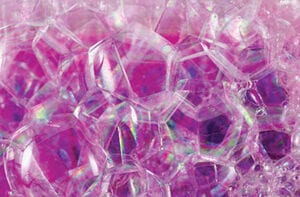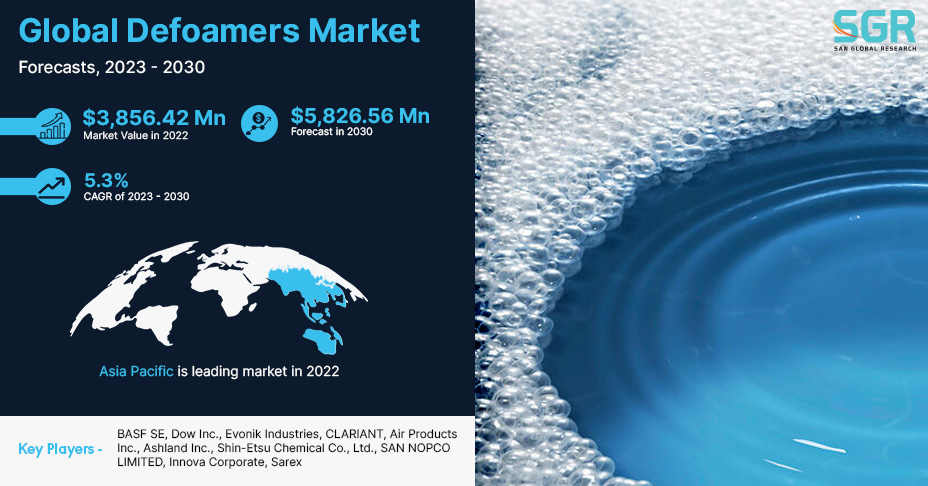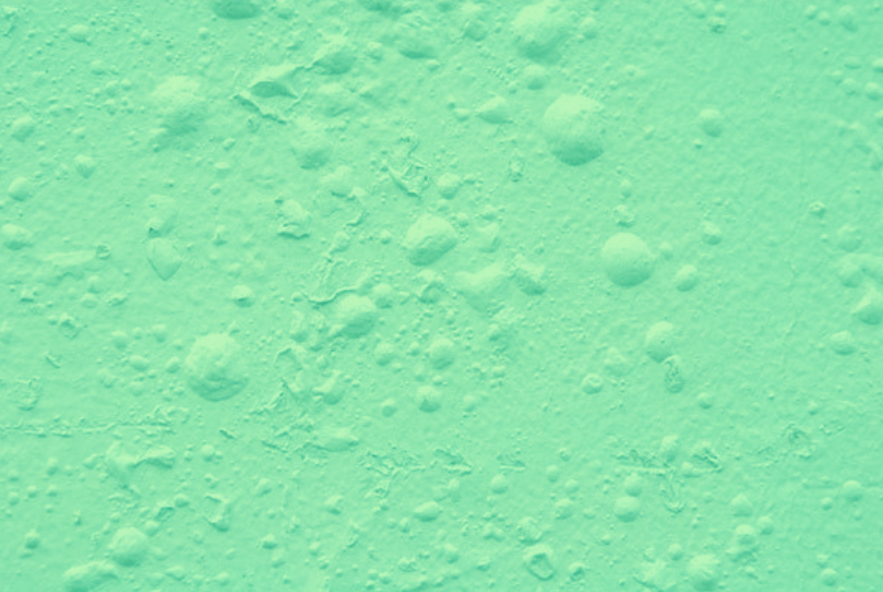The Function of Defoamers in Enhancing Product High Quality and Efficiency
In various producing procedures, the visibility of foam can considerably prevent item top quality and functional efficiency. Defoamers offer as essential ingredients that reduce this problem, making sure smoother production workflows while improving the functional and visual features of the end products (defoamers). Their application extends a wide variety of industries, from food and beverage to drugs, where consistency and reliability are extremely important. The option of the suitable defoamer can be vital to accomplishing optimum outcomes, elevating essential inquiries about solution compatibility and efficiency metrics that warrant further exploration.
Understanding Defoamers
Understanding the duty of defoamers is important for maintaining product high quality throughout numerous markets. Defoamers are chemical ingredients developed to avoid the formation and reduce of foam in fluid systems, which can adversely influence processes such as blending, filling up, and surface tension. Frothing can bring about inadequacies, item defects, and compromised visual appeal, making defoamers an essential part in producing operations.
In industrial applications, defoamers aid to boost item consistency and security. For instance, in the paint and coatings market, foam can disrupt the application procedure and the last surface. Likewise, in food and drink production, too much foam can prevent bottling and packaging efficiency (defoamers). The effective use of defoamers not only guarantees smoother manufacturing procedures yet additionally contributes to superior item efficiency.
Furthermore, the option and formulation of a defoamer need to line up with particular application demands, such as compatibility with other active ingredients, effectiveness under differing temperature level and pH conditions, and potential regulative restrictions. Ultimately, recognizing defoamers' features and their significance in various formulas is essential for enhancing production and making sure the highest top quality end products.
Types of Defoamers
Defoamers can be categorized right into several types based upon their structure and system of action. The main types include silicone-based, non-silicone natural, and not natural defoamers.
Silicone-based defoamers are among one of the most reliable, mainly as a result of their ability to spread out rapidly on the liquid surface and interfere with foam formation. Their special chemical framework permits remarkable stability, making them appropriate for high-temperature applications and environments with varying pH degrees.
Non-silicone organic defoamers, often made up of natural oils or fatty acids, are valued for their biodegradability and lower poisoning. These are generally made use of in food and drink applications where safety and security and ecological effect are critical.
Inorganic defoamers, that include materials like talc or calcium carbonate, act by enhancing the thickness of the liquid, thus decreasing foam stability. They are often used in commercial procedures where compatibility with other products is not an issue.
Each type of defoamer has unique advantages and constraints, enabling customized options depending upon the details frothing issues experienced in different applications. Understanding these distinctions is essential for maximizing efficiency and accomplishing desired product top quality.
Applications Throughout Industries
Numerous sectors utilize defoamers to improve item quality and operational effectiveness. In the food and drink market, defoamers are vital in processes such as brewing and dairy manufacturing to avoid foam formation, which can result in inefficiencies and important link product incongruity. By regulating foam, manufacturers can guarantee better return and an extra uniform item.
In the pharmaceutical industry, defoamers play an essential role in the formula of liquid medicines, where too much foam can impede mixing and accurate dosing. Their use helps maintain the honesty of the formulas and promotes smoother production processes.
The paint and coverings industry also depends on defoamers to boost the performance of products throughout application. By lessening foam, these additives make certain a smoother finish and enhance the visual high qualities of the last product.

Advantages of Utilizing Defoamers
While the application of defoamers varies throughout industries, their advantages regularly boost item top quality and procedure efficiency. One significant advantage is the decrease of foam formation during making processes, which can or else lead to manufacturing hold-ups and inconsistencies in product top quality. By lessening foam, defoamers enable a smoother circulation of see this here materials, assisting in more effective procedures and lowering the chance of devices breakdowns.
In addition, using defoamers can boost the look and structure of end products. In fields such as coverings, paints, and food processing, extreme foam can jeopardize the visual aesthetics and total top quality, while the proper defoamer application guarantees an uniform surface and preferable attributes. In addition, defoamers can contribute to set you back financial savings by reducing waste throughout manufacturing and enhancing making use of resources (defoamers).

Selecting the Right Defoamer
Selecting the best defoamer is essential for maximizing manufacturing procedures and guaranteeing item quality. The selection of defoamer affects not only the efficiency of foam control yet additionally the general efficiency features of the end product. Variables to take into consideration consist of the kind of application, the chemistry of the solution, and the ecological problems under which the item will certainly be utilized.
Various markets may call for details defoamer types, such as silicone-based, natural, or polymeric defoamers. Comprehending the compatibility of the defoamer with the key components is important to avoid adverse responses that can jeopardize product honesty. Furthermore, the defoamer's effectiveness in numerous temperatures and pH degrees have to be evaluated to ensure constant efficiency.
Checking the defoamer in small applications can provide important insights right into its efficiency and viability. Consideration of governing compliance, especially in food, drugs, and cosmetics, is vital in picking a defoamer. Inevitably, a thorough assessment of these factors will bring about the option of you could check here a defoamer that not only controls foam successfully yet likewise improves the high quality and efficiency of the final product.
Final Thought

In final thought, defoamers are vital additives that dramatically enhance product high quality and efficiency across various industries. The strategic choice and application of defoamers lead to cost financial savings, optimized resource usage, and enhanced customer contentment.
Frothing can lead to inadequacies, product problems, and compromised aesthetic charm, making defoamers a critical part in producing procedures.
